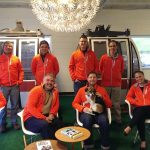
From left to right: Revive & Restore’s Ben Novak and Ryan Phelan with Cofactor’s Dr. Jarret Glasscock and Dr. Casey Jowdy
Being on the cutting edge of genomics has been a part of our team’s identity since before the formation of Cofactor Genomics. This is due to the fact that a number of our directors worked on the human genome project at Washington University’s Genome Center. It is rewarding to us to be involved in projects that continue to push genomic knowledge forward and demand a high level of consistency, quality, and precision. Thus, a partnership with Revive & Restore is a great fit. If you’re unfamiliar with the organization, they’ve recently been reported on in the New York Times, NPR, and National Geographic. They work on what’s called genetic rescue. An effort to sustain and bring back animals on the edge of extinction, or those already lost, using genomics.
Perhaps even as little as a decade ago, this idea would have sounded absurd. Fortunately, today there is a plethora of advanced techniques and cutting edge technologies that can help accomplish this goal. One of the first tasks associated with the genetic rescue of a species is understanding our starting point. We can’t get somewhere without first knowing where we are. In other words, we need a reference, or a genome assembly. From there, we can compare our reference, or starting point, to a closely related species (where we need to get) and employ other techniques such as CRISPR to help get us there.
Revive & Restore approached Cofactor to help with the sequencing, as our team has a long history in managing genomic sequencing projects and a reputation for designing custom solutions for challenging genomic studies. With a project currently on the sequencers, and more projects in the design stage, you can expect to hear more from us on Revive & Restore in the near future. They’re one of many exciting partners and thought leaders that Cofactor works with every day.





